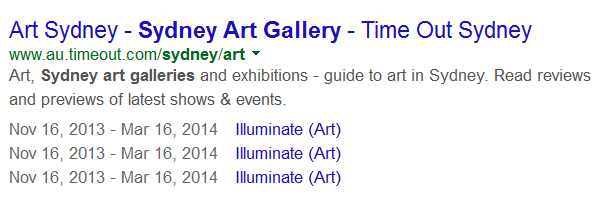As you no doubt heard, last month Google began imposing manual penalties on sites accused of rich snippet spam. Rich snippets (also known as microdata or structured data) is a way that allows webmasters to use a special syntax known as semantic markup to create rich and detailed SERP listings for their sites.
With semantic markup, those plain old text renderings of title and descriptions can be enhanced with an array of additional features such as menus, promotions, business locations, video thumbnails, author pictures, and much more. It was an on-going project with more options being added regularly. Then last month, Google began a program of manual checks for rich snippet spam.
In fact, Matt Cutts hinted at upcoming changes while talking at Pubcon last October. He followed this up with a 15% reduction in the volume of rich snippets that were shown.
Penalties are limited but potentially disruptive. Google is in complete control of its search results and decides for which sites rich snippets are shown. So it’s prime method of penalising offenders could be simply to not allow those sites to display them. With structured markup offering such benefits, this would be a serious penalty.
Why You Must Set Up Rich Snippets Properly
What you need to remember is that Google’s antennae are finely tuned to detect spam so you need to be squeaky clean to be safe. In the future, things will probably get even stricter. Regarding the rich snippet penalties, what is now a manual process could well be incorporated into an algorithm in some future update. So it’s best to be cautious especially considering the enormous advantages that semantic markup offers.
How to Avoid Semantic Markup Spam Penalties
Firstly, you need to make sure you have no hidden content in your structured data. By this we mean content visible to the spiders but hidden to your visitors. Using CSS allows you to do this but the practice can be considered spamming.
Next, your markup should accurately match your page content. The purpose of rich snippets is to make clear exactly what you’re offering so any discrepancy is a serious matter.
In addition, you should ensure that your entire semantic markup complies exactly with the guidelines laid down at schema.org. Practises such as mixing several markup formats on one page or improper nesting or data can result in the search engines being unable to properly interpret your data.
Focus on the User Experience
Google makes it perfectly clear what it considers spam. “A rich snippet may be considered spam if it harms the user experience by highlighting falsified or misleading information,” That sounds clear enough and is a smart policy to apply in all your dealings with Google or indeed anyone else you do business with.


















